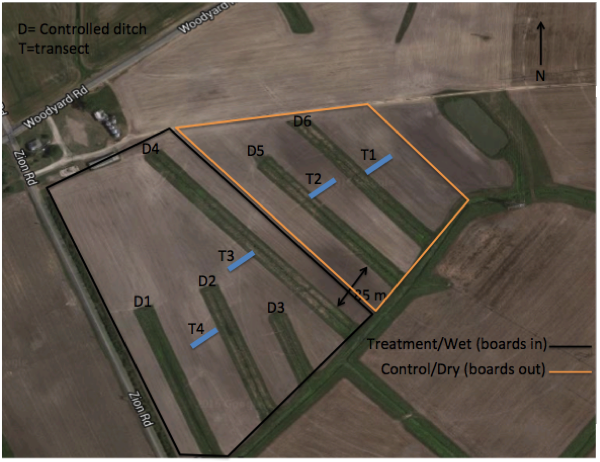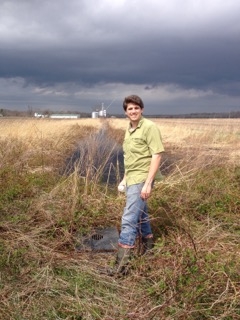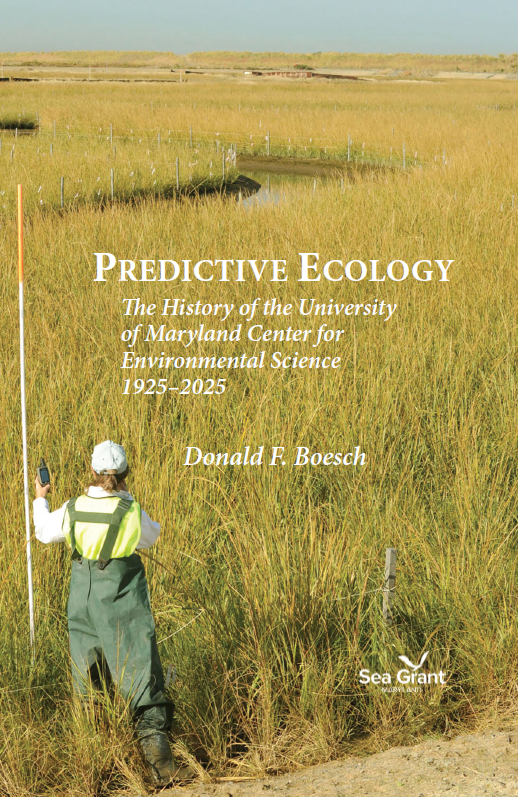Knauss legislative fellowships in Congress help build careers — and they're fun and educational. See our video and fact sheet for details.
Reducing Bay Agricultural Pollution: Success at the Expense of Air Quality?
I am not sleeping well, constantly stabbed by old corn stubble as I roll from side to side in my tent. Finally, first light comes around 6 a.m. on an early September morning. I unzip my tent, stick my head out, and stare out into the soybean abyss. Welcome to a farm field that is the field laboratory for my research project.
At this time and season, the beans are nearly fully grown, waist-high, and completely covered with morning dew. Because this field is in an isolated part of the Eastern Shore of Maryland, I must camp because the optimal time to take measurements is in the cool early morning.
Regretting wearing blue jeans, I begin to carry my research equipment to its destination, carefully walking between rows to avoid destroying the tightly spaced crop. After the first trip I head back to get more equipment. Emerging from the field I again realize the inadequate waterproofing properties of jeans and wool socks, as I am completely soaked with dew from the waist down. No time to dry myself off, harvest is only a few weeks away, and I need to measure greenhouse gas emissions from this field before then!
 |
|
This aerial image shows the farm field my team is studying. The black border encloses the area we deliberately kept wetter as part of our experimental design. The orange border shows the drier, control area. Map Data: Google, DigitalGlobe, U.S. Geological Survey, USDA Farm Service Agency ©2016 with overlay by Jake Hagedorn |
I arrived at this field on the Eastern Shore after an earlier field season I spent in North Carolina testing the effectiveness of pesticides. I became fascinated with how our agricultural practices and techniques impact the environment, both the air that we breathe and water we drink. Figuring out how to minimize our environmental impact while maintaining crop yield is why my team and I began working with the owner of this field who is equally interested in our goal.
Let’s start with the good news! The water quality of the Chesapeake Bay and its watershed has been studied for decades, and as a result we have identified ways to improve it. Given that agricultural fertilizer runoff is one of many sources of water pollution, controlling this drainage better has been proposed as a best management practice (BMP). This strategy relies on placing control structures in drainage ditches to prevent surface water and shallow groundwater from draining out of the fields. The water stays in the field without damaging the farmer’s crops. The positive result of holding the water is that excess nitrate from fertilizer, a primary water pollutant, is consumed and reduced by the metabolic activity of naturally occurring bacteria, therefore improving water quality.
|
In August 2016, the beans are about waist-high. The new air quality instrument is deployed and measuring greenhouse gas emissions through the white tubing. Credit: Jake Hagedorn |
What about the bad news? The same natural processes that consume and reduce nitrate in the water also produce a potent greenhouse gas byproduct, nitrous oxide. And the wetter the field, the better the conditions for production of another greenhouse gas, methane. Both gasses move from the soil and into the air.
So what? The goal of my project is to measure the pros and cons of reducing agricultural runoff – both to quantify the reduction of nitrate pollution leaving this farm field and also to measure any increase in greenhouse gases produced as a result of keeping the field wetter for longer. If the management strategy reduces water pollution and does not produce any additional air pollution, then it should be promoted as a transformational BMP that optimizes agricultural production and environmental impacts!
|
With an irrigation line towering in the background, the air trapped in the circular gray chamber at the bottom of the image is transported via pump to the instrument on the table at the edge of the field. Credit: Jake Hagedorn |
Who is doing this research? About 40 miles northeast of the Bay Bridge, off U.S. Route 301, a collaborative team of scientists from multiple labs at the University of Maryland Center for Environmental Science and Washington College are involved. I am working with a farmer who is vested in testing out new farm management strategies that may benefit himself and the entire Chesapeake Bay community. On 40 acres of his land, we are conducting an experiment in which half the fields will undergo drainage water management while the other half will not. The farmer will farm his fields just like he usually does, and we will measure the differences in water and air quality. This interdisciplinary, cooperative opportunity is unique, and because we are using new measurement technologies, the research design is novel in the Bay region!
What’s next? The project requires collecting at least two full years of data in order to measure how the air quality and water quality differ when there is corn growing in the field instead of soybeans as the farmer rotates his crops. With the harvest now complete, we will wrap up work this year by beginning to consolidate all the water and air measurements taken during the growing season. We will continue taking measurements through the winter so that we can compare them against our measurements taken during the growing season. I guess that means some colder nights in the tent!
Photo, top left: This is a view of a flooded ditch, taken in March 2016, with a control structure (the black cap near my feet, lower left) that extends 8 feet into the ground. All the water in the field passes through this structure so water level can be controlled. Credit: Stephanie Siemek.
See all posts to the Fellowship Experiences blog




